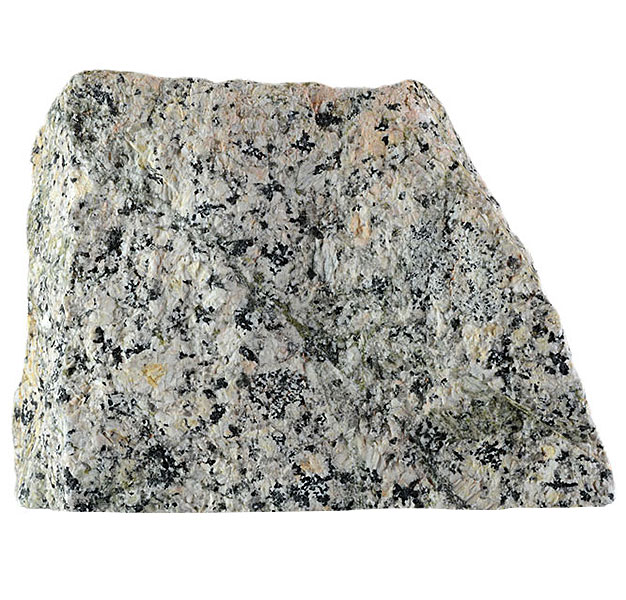
Fact sheet
The Lundy granite complex is an anomaly as it looks very similar to the many of the granites of Cornwall (and Dartmoor), but yet is very much younger at 58.7±1.6 Ma. It is the southernmost complex of the British Paleogene Volcanic Province whose main focus is in NW Scotland and unrelated to the major granite batholith of SW England.
Petrologically it is also unusual as the granite formed from a volatile-rich melt enriched in elements such as Li, F, Rb, Nb, Ta and W. This has created a pale-coloured rock in which the two micas are pale brown lithian siderophyllite and colourless lithian muscovite. A fine-grained secondary muscovite is also present (see all three mica species in rotation 3). Orthoclase shows typical perthite and simple twinning. Rotation 4 shows one orthoclase crystal enclosing a smaller lamellar twinned plagioclase feldspar crystal. It is adjacent to a feldspar-like mineral with apparently curved twinning. This is thought to be cordierite. Quartz exhibiting wavy extinction is abundant and in places is found associated with topaz. The two minerals have similar optical properties, although topaz has much higher relief. Rotation 1 shows topaz enclosed in mica and rotation 5 shows a tiny inclusion in quartz. Note the well-formed quartz and plagioclase feldspar crystals in the latter field of view. The rare needle-like opaque crystals are tungsteniferous columbite.
The United Kingdom Virtual Microscope (UKVM) collection consists of igneous, sedimentary and metamorphic rocks from around the UK.
It is intended as a teaching resource, helping to tell the story of the common rock types and how they form, and reflecting the history of the UK at the margins of the continent of Europe. The collection is a series of teaching sets, for example igneous rocks from the North Atlantic Igneous Province and SW England; high-temperature metamorphic rocks from Scotland and low-temperature metamorphic rocks from Wales; and sedimentary rocks, including English limestones and sandstones.








